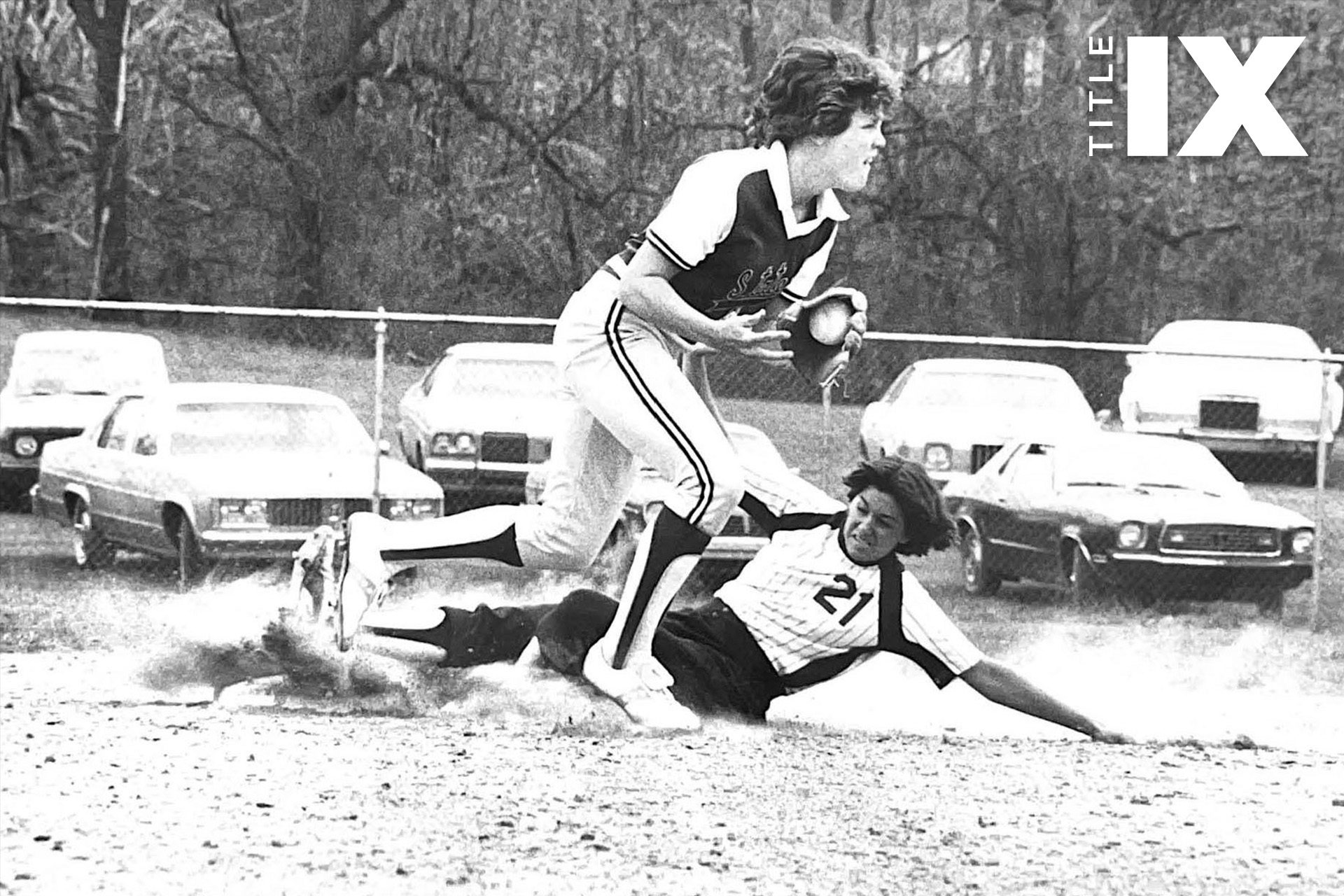Meg Seng: Celebrating Title IX’s Anniversary by Looking to Our Past

On June 23rd, 1972, President Richard Nixon signed a law that would change the course of the 20th century. It was only 35 words long.
“No person in the United States shall, based on sex, be excluded from participation in, be denied the benefits of, or be subjected to discrimination under any education program or activity receiving federal financial assistance,” it ran.
The words, better known as Title IX, revolutionized education — but the impact was especially seismic when it came to athletics. Women, the new law finally declared, had just as much right to athletic opportunity in high school and college as men did, and any school that wanted a dime of federal funding would have to comply. No more inferior locker rooms, lesser equipment, and grossly unequal budgets. It was time, the new law insisted, for schools to treat men’s and women’s teams equally.
This June, believe it or not, marks Title IX’s 50th anniversary. The occasion is a reminder of both how far the United States has come and how far it has to go. In 1973, for instance, a threatened boycott by tennis superstar Billie Jean King forced the U.S. Open to finally award equal prize money in its men’s and women’s draws. But Wimbledon, on the other hand, did not fully equalize its prize pools until 2007.
Fifty years ago, some of the progress women’s sports have made in the United States was utterly unimaginable. The U.S. Women’s National Soccer Team, the most successful women’s national team in the world, has reached American hero status after winning World Cups in 2015 and 2019. In 2020, Sarah Fuller of Vanderbilt became the first woman to score in a Power Five football game. Just this year, more milestones have fallen. In January, the Yankees appointed Rachel Balkovec as the manager of their A-level minor league team, the Tampa Tarpons, making her the first woman to manage an affiliated club. In March, for the first time, the NCAA marketed its spring basketball tournaments as Men’s and Women’s March Madness, after the Men’s tournament claimed a monopoly on the “March Madness” designation for decades.
 I’ve experienced the growth of women’s sports myself. At Indiana University in the 1970s and ‘80s, I was a two-sport athlete, playing four years of volleyball and softball. This was several years after Title IX had become law, but it was still being implemented, and it was clear that there was still work to be done on the way to full equality. For instance, our softball team was highly competitive — my junior year, we were the runner-up for the National Championship — but I was teammates with some of the very first softball scholarship winners in school history. When I got to Indiana, some women’s sports only had one scholarship per team. Fortunately, we’ve come a long way — but not all the way — since then. Over its 50 years, Title IX’s requirements for equity in sports have elevated and enriched the lives of countless women, giving them athletic opportunities that they might otherwise never have experienced.
I’ve experienced the growth of women’s sports myself. At Indiana University in the 1970s and ‘80s, I was a two-sport athlete, playing four years of volleyball and softball. This was several years after Title IX had become law, but it was still being implemented, and it was clear that there was still work to be done on the way to full equality. For instance, our softball team was highly competitive — my junior year, we were the runner-up for the National Championship — but I was teammates with some of the very first softball scholarship winners in school history. When I got to Indiana, some women’s sports only had one scholarship per team. Fortunately, we’ve come a long way — but not all the way — since then. Over its 50 years, Title IX’s requirements for equity in sports have elevated and enriched the lives of countless women, giving them athletic opportunities that they might otherwise never have experienced.
At Greenhills, to celebrate the anniversary, we looked to our past. Greenhills’ history of women’s sports is rich and interesting: did you know, for instance, that one of Greenhills’ first girls cross country coaches was a two-time U.S. Olympian — and that one of her teams won the first State Championship in school history, beating out the boys team by about 15 minutes? Over the course of the year, we’ve gathered a selection of stories from throughout Greenhills’ history. We’re happy to present them as we celebrate 50 years of Title IX.
Proudly,
Meg Seng
Greenhills School Director of Athletics





